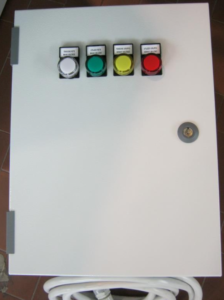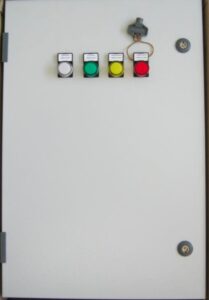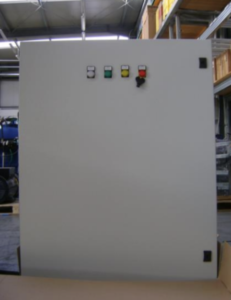Automatic Transfer Switch's
Explore our extensive inventory, which includes 3 and 4 pole automatic transfer switches (ATS) & change-over panes ranging from 25 to 2500 amps. Additionally, we stock a comprehensive selection of 3 and 4 pole dual-power automatic transfer switches, available in sizes ranging from 25 to 2000 amps. These dual-power ATS units are ideal for applications requiring a secondary backup source of emergency power in the UK.
An automatic transfer switch (ATS) serves a crucial purpose in electrical systems. Its primary function is to ensure uninterrupted power supply during times of when the primary power source typically the mains grid, fails. When the mains power supply fails or fluctuates, the ATS switches the load to an alternative power source, which is typically a backup generator or an uninterruptible power supply (UPS). This seamless transition helps maintain the continuity of electrical power to critical equipment, preventing downtime and safeguarding against a potential data breach, equipment damage or financial loss.
A transfer switch and an automatic transfer switch (ATS) both facilitate the switching of electrical loads between power sources. However, the key difference lies in the level of automation and control:
Transfer Switch (MTS): A transfer switch, often referred to as a manual transfer switch, requires manual intervention to switch power sources. Users must physically operate the switch to transfer the load from one power source to another. This type of switch is commonly used in residential settings or smaller applications where immediate power source switching isn’t critical.
Automatic Transfer Switch (ATS): In contrast, an ATS operates automatically without human intervention. It continuously monitors the quality and availability of the primary power source. When it detects an issue, such as a power outage or voltage irregularities, it automatically transfers the load to the secondary power source. ATS systems are commonly used in commercial, industrial & public service settings, ensuring uninterrupted power supply without delay.
While ATS’ offer a whole host of benefits, they also come with some disadvantages to note:
Cost: ATS systems can be relatively expensive to purchase and install compared to their manual transfer switches counter parts, this is due to their complex automated features, however as technology progresses, the price gap is continuingly getting smaller.
Maintenance: ATS panels require consistent checks to ensure their thorough operation. Maintenance costs may therefore be higher, and therefore a cost to take into consideration.
ATS systems can introduce some points to consider, meaning they are not necessarily the first choice for smaller or simpler applications where a manually operated transfer switch is sufficient
Understanding how an automatic transfer switch works is essential for your sites limited down time. Here are some key aspects to understand:
Working Principle: ATS units monitor the primary power source continuously. When the ATS detects an issue, it triggers a switch to transfer the electrical load to the secondary power source, such as a backup generator or UPS. This transfer occurs instantly to maintain uninterrupted power supply, all be it the generator make take up to 30 secs to get fired up and up to speed to fully take over the site load. Learn more about how a Automatic Transfer Switch works in our blog here.
Types: ATS units come in various version, including single-phase and three-phase ATS, of which are available in different amp (A) ratings, here at Targe Power we supply from 60-2500A. The choice depends on the generator KVA.
Price: The cost of an ATS can vary based on whether the unit is 1PH or 3PH, the amp rating (the higher the AMP’s typically the more expensive the unit becomes) and what brand breaker or contactor is used, typically these brands are ABB, Schneider, Terasaki & Chint.
In Summary: ATS and MTS are both important components to be used alongside both primary and secondary power supplies, choosing the right one goes down to the criticality of your load.
Here at Target Power Generators, we supply high quality ATS and MTS to suit all generator KVA ranges from 60A up to 2500A. Contact the team for your requirement and we shall get back to you swiftly.



